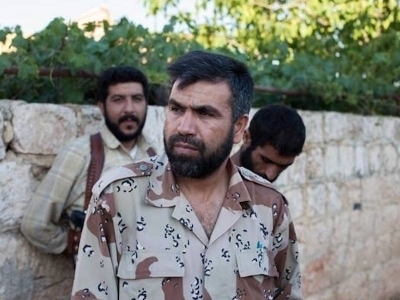On Tuesday, Free Syrian Army (FSA) brigades took over the west part of Al-Sheikh Maskin in Daraa province, cutting off an important road between Izraa and Nawa, used by the regime for supplies. The FSA is now only one checkpoint away from the highway between Damascus and Daraa.
Cutting off this road would be a painful loss for the regime and it would shake the capital’s defenses.
American reports have talked about the "critical situation" the regime is now facing in the south after the victory achieved by the FSA in Daraa and Quneitra, especially its gaining control over strategic hills like Al-Hara, and Jomou, and its liberation of many towns and villages in the area.
These victories have changed the balance of power in the south, and thus the regime lost the military strength it had always had around Damascus.
While the FSA is winning in the south with nothing apparently able to stop its progress, in the north, it is retreating and losing towns and villages to Al-Qaeda organizations from the Nusra Front and Jund Al-Aqsa in league with the Islamist movement, Ahrar Al-Sham.
Observers of the Syrian situation find this contrasts in the FSA performance between the north and the south strange. Many analysts tend to believe the theory that the south is an exceptional case because the FSA is being organized there by the Jordanian and the American intelligence due to its proximity to Israel and Jordan, which could be impacted badly if things went wrong – especially if extremist organizations took over the area.
This theory seems reasonable, yet it does not explain important cirumctances in the north and the south which led to this contradiction in the FSA performance, in terms of discipline of the fighters and the chances of its victory.
In the north the FSA factions consist of a collection of respected officers, bandits, drug dealers, revered revolutionary leaders and other previous unknowns who came to the fore. In the south they seem to have emerged from a well-established social structure that has its own hierarchical and promotion mechanism, especially in the Horan region, where large influential families are found. These families have elders who have leverage and direct the position of their members and whose opinions are usually respected.
Abdul Naser al-Aied, a military analyst, believes the wide space occupied by the FSA in Aleppo, Hama and Idleb, and the exposure to the long border with Turkey, made it hard for the FSA to control the north. In addition, the resources available along the border and the increase of smuggling operations helped increasing the wealth of some groups and leaders, who enjoyed the feeling of domination and began investing their money while leading their groups remotely from Turkey.
On the other hand, all FSA factions in the south, which consists of around 30,000 fighters, gather under one leadership that unites all these factions in their fight against the regime and in confonting extremist groups like the Nusra Front. This prevents any real confrontation as the extremist groups are weak in front of the unity of the FSA factions.
Although the Syrian Revolutionary Front has lost to the Nusra Front in the north of Syria, it still forms the major component of the FSA in the south. Jamal Maarouf, the leader of the front, was defeated by the Nusra Front, Jund Al-Aqsa and Ahrar Al-Aham, and forced to leave his village in the face of his enemies and admirers alike. However, this would never have happened to the Syrian Revolutionary Front in the south, where there is a spirit of friendship, solidarity and unity among the groups’ leaders. If problem befalls one, the other leaders and factions all work to defend the other, due to the social correlation, their awareness and their level of education. This is in contrast to what happened to Maarouf in the north, whereby his friends and some factions supported by the U.S. actually conspired against him and worked with the Nusra Front to get rid of him, as those close to him explained.
The Nusra Front and the other extremist groups find fertile land in the north of Syria, unlike the south where it is very difficult for them to expand. For instance, the Islamic State of Iraq and Syria does not exist there at all, while the Nusra Front only has 3,000 fighters who were allowed to stay only because of their commendable work alongside the FSA.
In the Horan, there is also a large number of intellectuals and university graduates, especially graduates of sharia and Islamic studies. Unlike in the the north, where the Nusra Front depends on the uneducated and ignorant people, whose isolation made them ripe to receive any newcomer who would persuade them with his ideas, like a good door-to-door salesman.
Translated and edited by The Syrian Observer
......


